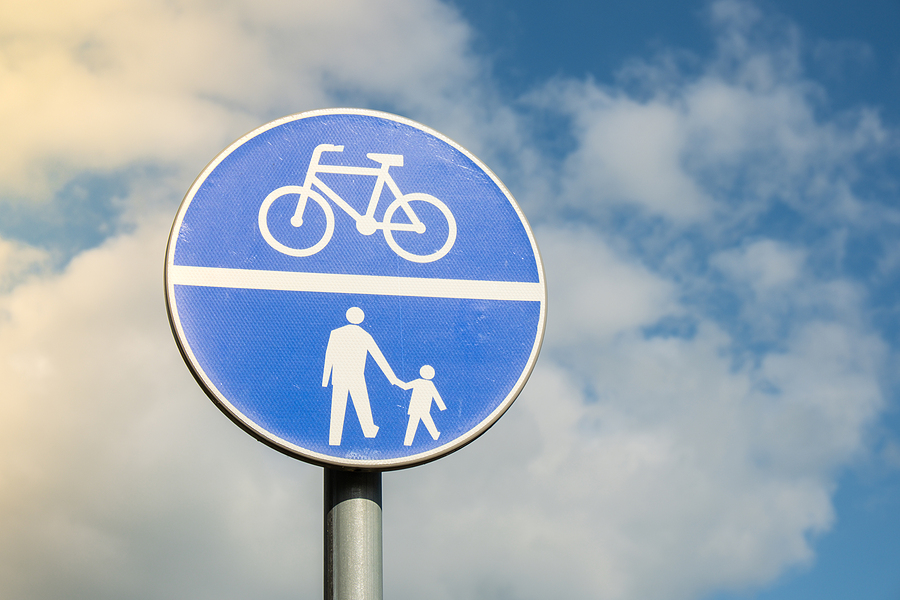Minnesota is one of the safest states for pedestrians, coming in at No. 10 with a fatality rate of .83 per 100,000 residents. But pedestrian accidents in our state claimed 46 lives in 2022. While that’s an 18% decline from 2021, that number remains too high.
Both drivers and pedestrians must be aware of state laws designed to help make walking as safe as possible. Failure to do so can lead to disaster. This article spells out five laws that every pedestrian must know to be as safe as possible.
If a negligent driver hit you while you were walking, a Sand Law attorney will work to help you obtain maximum compensation. You can call 651-291-7263 or use our online contact form for a free evaluation of your case.

1. Pedestrians Do Not Always Have the Right of Way
While pedestrians often have the right of way within marked crosswalks, that’s not the case when there’s no crosswalk or crossing at any point other than an intersection. Walkers must always exercise caution and not assume that drivers will stop automatically. Many pedestrian accidents occur when pedestrians unexpectedly enter traffic without giving drivers enough time to react.
Pedestrians must also know that crossing the road at points other than designated crosswalks or intersections can be dangerous. In such situations, pedestrians should yield to oncoming traffic and wait for a safe opportunity to cross. Jaywalking, crossing the street in an illegal or unsafe manner, can put pedestrians at risk and might lead to legal consequences.
2. You’re Required to Use the Sidewalks
When sidewalks are available and accessible, that’s always the safest option for pedestrians. Sidewalks provide a physical separation from motor vehicles, significantly reducing the risk of accidents. When pedestrians use sidewalks, they can focus on walking and not worry about potential hazards from passing traffic.
However, sidewalks might be absent in some areas, mainly rural regions. In these situations, pedestrians should walk on the left side of the road, facing oncoming traffic. By doing so, they can see approaching vehicles and better control their safety.
3. Motor Vehicle Drivers Owe Pedestrians Due Care
Drivers are legally obligated to exercise due care when operating their vehicles in areas where pedestrians may be present. This means that they must be attentive and avoid distractions while driving. Texting or talking on a cell phone or engaging in other distracting activities behind the wheel can lead to accidents and endanger pedestrians’ lives.
Drivers must maintain a safe speed and be prepared to yield to pedestrians when necessary. This is especially critical in areas with a higher likelihood of pedestrian traffic, such as residential neighborhoods. Awareness of crosswalks, school zones, and areas with high foot traffic can help drivers be more cautious and prevent pedestrian accidents.
4. Drivers Must Stop for Pedestrians in Crosswalks
When a pedestrian indicates their intention to cross at a crosswalk, such as by stepping off the curb or making eye contact with the driver, the driver must come to a complete stop to allow the pedestrian to cross safely. Failing to yield to pedestrians in crosswalks can lead to severe consequences and legal liability for the driver.
5. You Must Follow Walk Signals
Pedestrian signals at intersections are designed to regulate pedestrian and vehicle traffic and enhance safety. Pedestrians must obey these signals to avoid accidents and maintain traffic flow.
When the “Walk” signal is displayed, pedestrians are allowed to begin crossing the road. However, they must complete their crossing before the signal changes to “Don’t Walk” or a flashing red hand. Attempting to cross the road after the “Don’t Walk” signal is displayed can put pedestrians in danger as vehicles may have the right of way.
Following the pedestrian signals, pedestrians can coordinate their movements with traffic and ensure a safer crossing experience.
Overall, pedestrians and drivers must be aware of their responsibilities and rights to promote safety and reduce the likelihood of accidents. Pedestrians should always exercise caution, and drivers should be attentive and ready to yield when pedestrians have the right of way.
What Should I Do if I’m Hit By a Car?
Being hit by a car or truck can, of course, be a traumatic and overwhelming experience. It’s crucial to take the following steps to protect your health, gather evidence, and safeguard your rights in the aftermath of the accident:
Seek Medical Attention
Even if you believe your injuries are minor, seeking medical attention is essential. If you don’t, that can endanger your health as well as your case. Some injuries may not manifest symptoms immediately, but a medical professional can assess your condition and provide necessary treatment. Additionally, medical records will be valuable evidence for future legal or insurance claims.
Report the Accident
Contact the police as soon as possible and file an accident report. The police report will provide an official record of the incident. It will detail the accident’s time, date, location, and circumstances. Be sure to provide accurate and factual information when giving your statement to the police.
Gather Information
Obtain essential information from the driver involved in the accident. This includes their name, driver’s license number, vehicle registration details, and insurance and contact information. Also, collect contact information from any witnesses who saw the accident. Witness statements can be valuable in supporting your version of events.
Document the Scene
If you can access a camera or a smartphone, take photographs of the accident scene. Capture images of vehicle positions, the point of impact, road conditions, traffic signals, and any visible injuries you or others may have sustained. Photographs can provide vital evidence and help reconstruct the accident scene later.
Never Admit Fault
Avoid making statements or admissions of fault, even if you think you might be partially at fault for the accident. In the confusion and shock of the moment, you may not completely understand what happened.
The at-fault driver’s insurance company will use anything you say against you. Let the police and your attorney handle the investigation and determine liability based on all available evidence.
Contact an Attorney
Consider reaching out to an experienced pedestrian accident attorney immediately. Pedestrian accidents involve complex legal issues, and having legal representation can protect your rights and interests. An attorney will work to build the best possible case. They’ll gather evidence, negotiate with insurance companies, and pursue compensation on your behalf.
Contact Sand Law ASAP to Speak with an Experienced Pedestrian Accident Attorney
Please don’t hesitate to get in touch with Sand Law if you’ve suffered an injury in a pedestrian accident caused by a driver’s negligence. You can schedule a free consultation by contacting us online or giving us a call at 651-291-7263.

